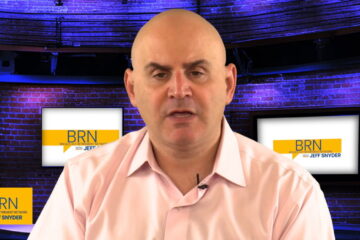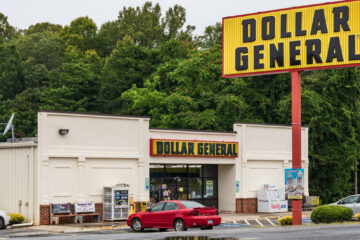Ever since President Donald Trump announced news of his tariffs on April 2, a day the administration calls “Liberation Day,” a wave of fear has swept across the country as both consumers and business owners have grappled with what the new levies mean for them.
In the business sector, companies that previously relied heavily on China and other international countries for exports scrambled to redirect their supply chains to other countries. Apple, for instance, announced it would move its manufacturing of Phones to India, a move that prompted open disdain from Trump after CEO Tim Cook announced it.
💵💰 Don’t miss the move: Subscribe to TheStreet’s free daily newsletter 💵💰
Other businesses simply had to tell their customers that prices would be going up. Walmart made that move this week, saying prices would go up in May and then “much more” in June. This also earned President Trump’s anger, causing him to post on his social media network Truth Social that the retailer should “eat the tariffs.”
Related: Walmart just made major strides in key area where Amazon excels
Naturally, all these messages from some of the biggest retailers in the world are having a negative effect on consumers. New York Fed President John Williams said in an interview with Bloomberg that businesses are reporting a slowing of consumer spending as people steel themselves for what’s to come.
Amazon CEO Andy Jassy just weighed in on this topic during Amazon’s annual shareholder meeting on April 21, and what he shared was surprising, to say the least.
Amazon’s customer behavior
While many businesses are already reporting on customer behavior changing around spending, Jassy says that Amazon has not seen the same problem.
“We have not seen any attenuation of demand at this point,” Jassy said during a Q&A held during the meeting. “We also haven’t yet seen any meaningful average selling price increases.”
Related: Amazon quietly develops creepy new technology
One part of this may be due to the “strategic forward inventory buys” Jassy spoke about the company making in April in order to stock up on goods. While some of Amazon’s third-party sellers have increased prices, Amazon told CNBC in a statement that “fewer than 1% of the items studied saw an increase in price.”
Earlier in May, Amazon reported it was considering displaying tariff costs on certain items. This also angered President Trump, who called Amazon founder Jeff Bezos to discuss the issue. Trump later told reporters that Bezos “solved the problem very quickly.”
Its a delicate time for businesses both big and small
Consumers are understandably shaken about the prospect of prices going up, especially when retailers as big as Walmart announce that tariffs will drive up prices on their products.
Amazon has an advantage here: by reassuring customers that prices are not going up, the company will naturally attract people who don’t want to pay more. This may mean that longtime Walmart shoppers consider signing up for an Amazon Prime account instead.
The two companies are often neck-and-neck in terms of revenue, although in February 2025, Amazon surpassed Walmart with $187.8 billion in sales, beating Walmart’s $180.5 billion. Prior to this, Walmart had been the top revenue generator every quarter since 2012.
The situation might just give Amazon an edge over Walmart. And it would present Walmart with another big problem beyond grappling with tariffs.


